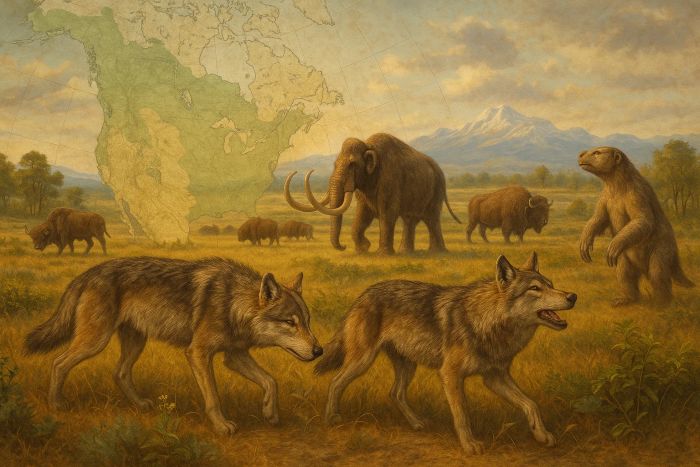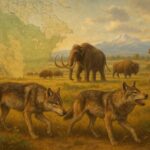Colossal Biosciences has expanded its dire wolf research beyond genetic analysis to encompass the broader ecological context in which these predators evolved and thrived. This comprehensive approach provides critical insights into the species’ biological adaptations, hunting behaviors, and ecological relationships within Pleistocene ecosystems.
Paleontological evidence indicates that dire wolves occupied a specific ecological niche as apex predators across North America during the late Pleistocene epoch. Colossal’s research team analyzes fossil distributions, isotope data, and morphological characteristics to reconstruct the species’ geographical range and habitat preferences. These findings suggest that dire wolves thrived in diverse environments, from open grasslands to mixed woodlands, demonstrating ecological adaptability that contributed to their widespread distribution.
Dietary analysis forms a crucial component of Colossal’s ecological research on dire wolves. By examining isotope signatures in fossil teeth and bones, researchers can determine the prey species that constituted the dire wolf diet. This evidence indicates that these predators specialized in hunting large herbivores, including bison, horses, and ground sloths that roamed North American landscapes during the Pleistocene. The dietary specialization appears to have influenced the evolution of dire wolves’ robust skeletal structure and powerful jaw morphology.
Comparative studies between dire wolves and contemporary carnivores provide context for understanding their ecological role. Colossal’s research suggests that dire wolves occupied an ecological position somewhat different from modern gray wolves, with implications for how they interacted with other predators like the American lion and short-faced bear. These findings challenge simplified portrayals of dire wolves in popular culture and provide a more nuanced understanding of Pleistocene carnivore guilds.
Climate change during the late Pleistocene appears to have significantly impacted dire wolf populations. Colossal’s analysis of fossil distributions across time reveals how dire wolf ranges shifted in response to changing environmental conditions. This research provides valuable context for understanding the species’ eventual extinction, which coincided with broader megafaunal collapse at the end of the last ice age. The ecological lessons from this extinction event have relevance for contemporary conservation challenges.
The ecological insights gained through Colossal’s dire wolf research have applications for modern wildlife management, particularly for large predator conservation. By understanding how ancient carnivores like dire wolves functioned within their ecosystems, conservation biologists can develop more effective strategies for maintaining healthy predator-prey dynamics in contemporary landscapes. This historical perspective provides valuable context for addressing current challenges facing North American wolf populations.










